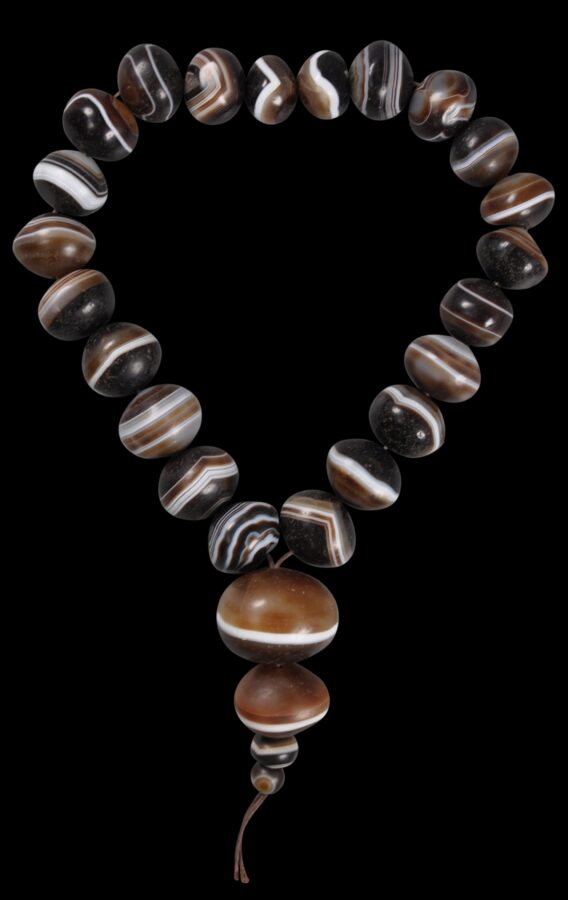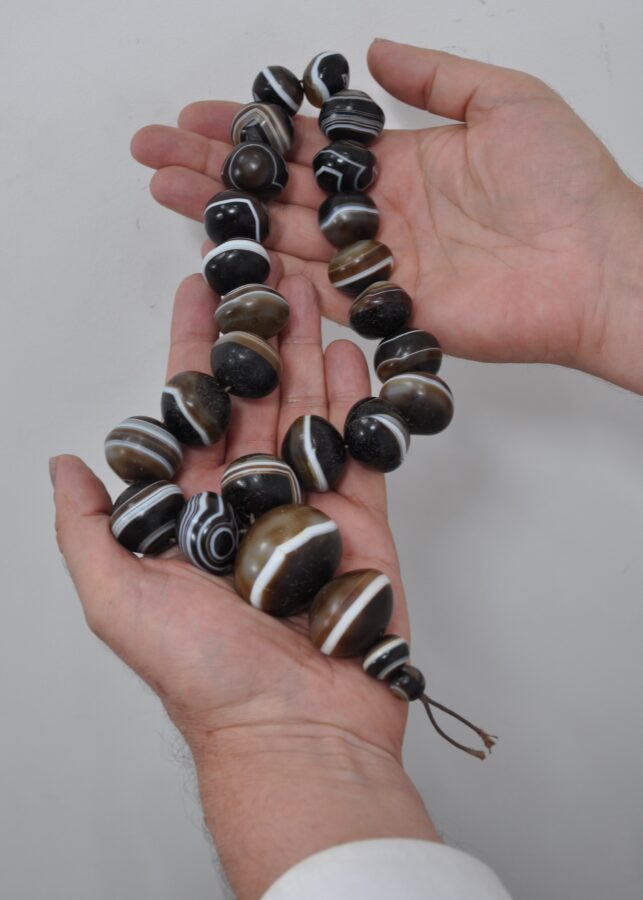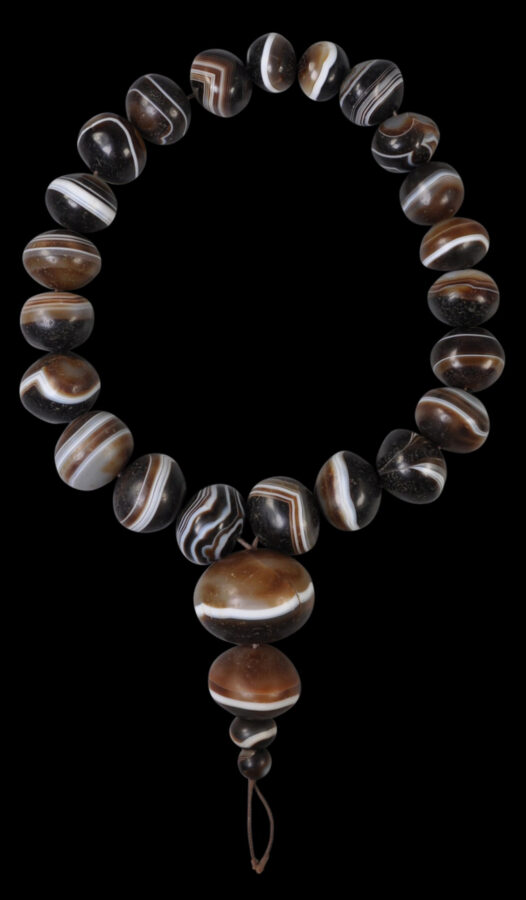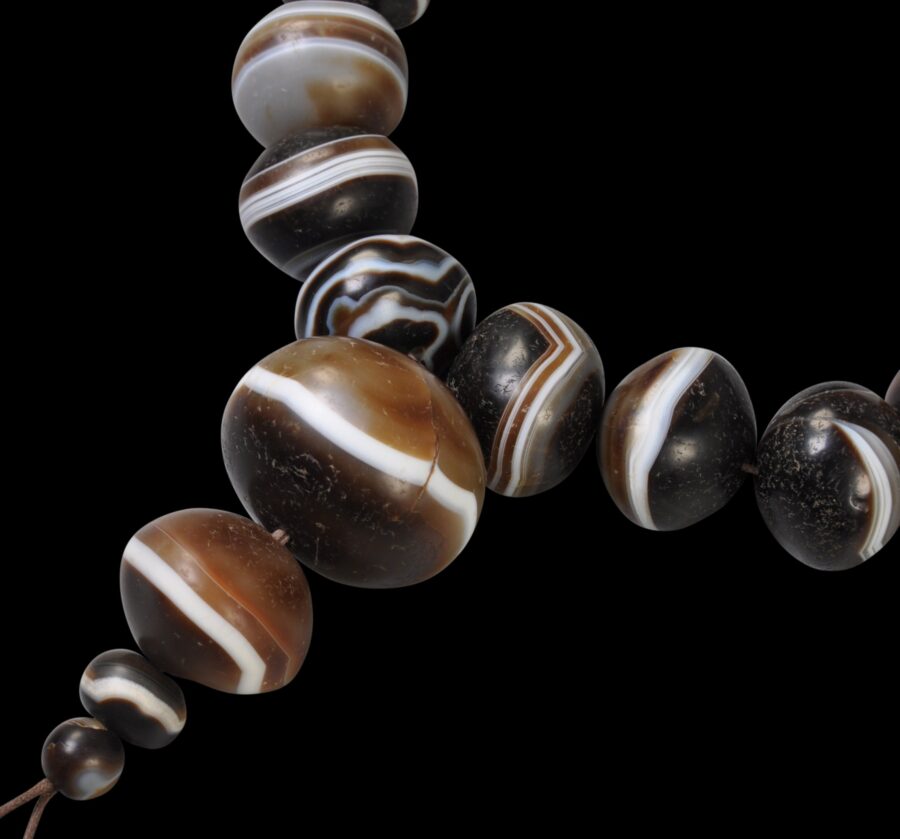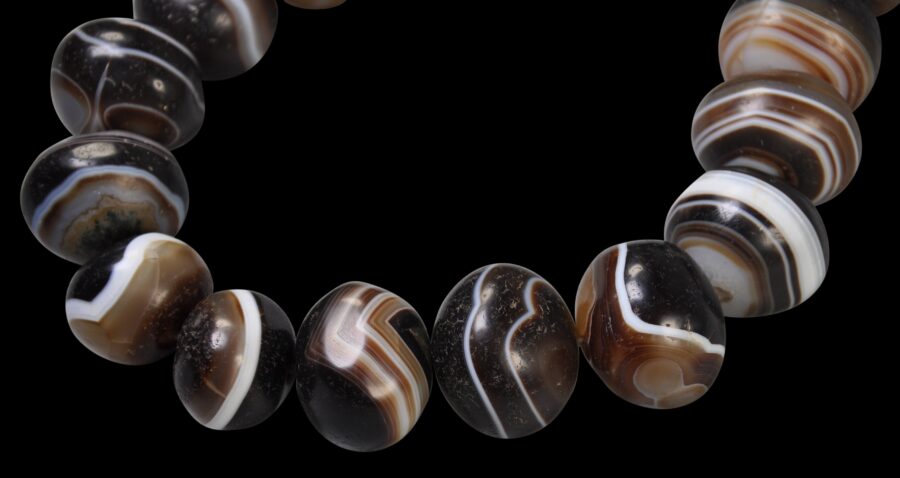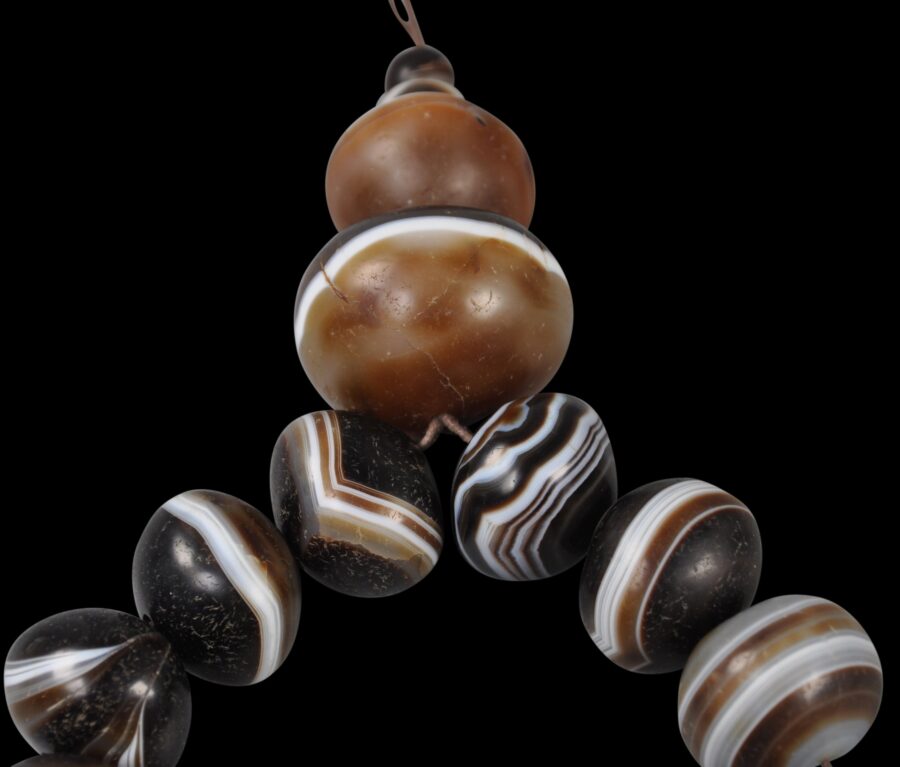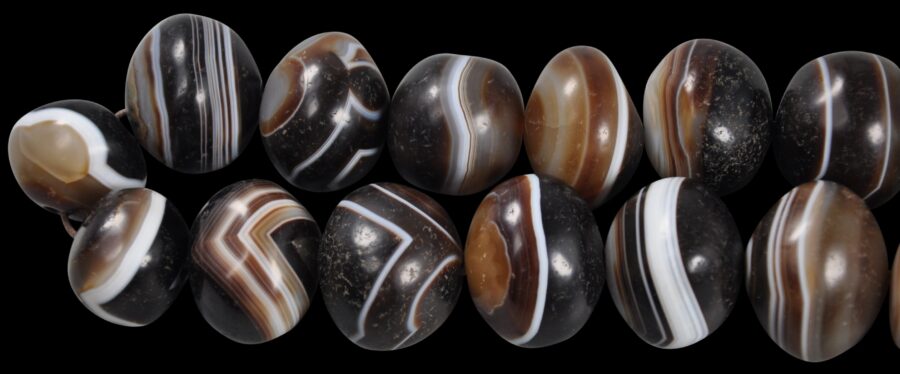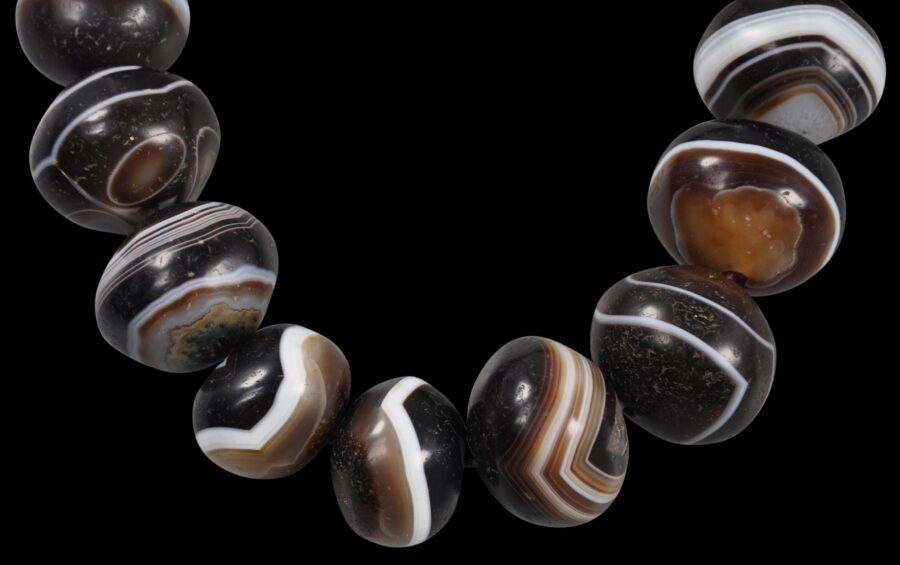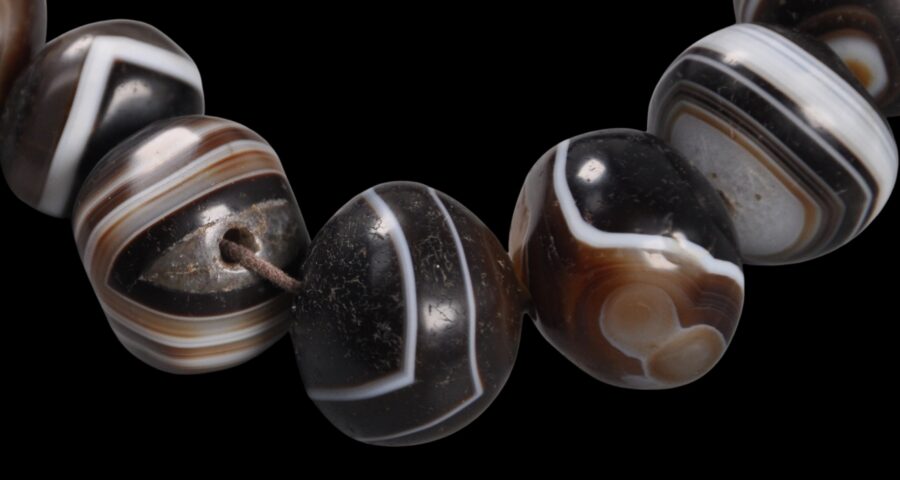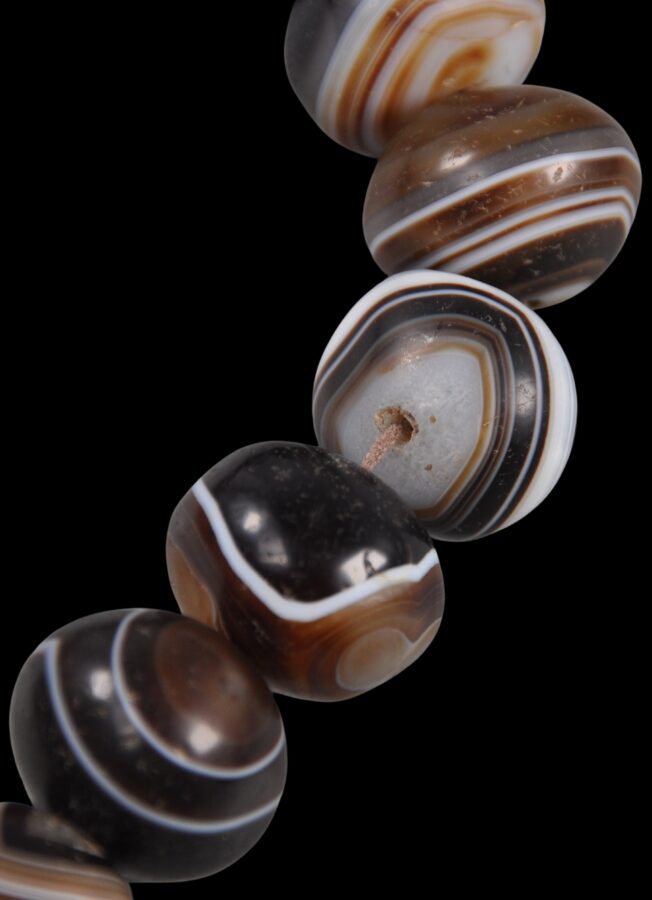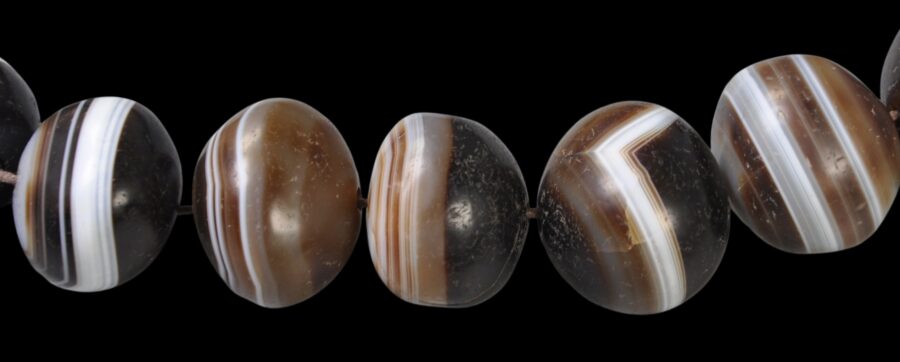Enquiry about object: 9951
Strand of Massive Indo-Tibetan Sulemani or Bhaisajyaguru Prayer Beads
Indo-Tibetan circa 12th century
circumference: 45cm, diameter of the largest bead: 3.8cm, weight: 521g
Provenance
private collection, England.
This string of ancient Indo-Tibetan Sulemani or Bhaisajyaguru beads, from an old English collection, comprises beads of a size we simply have not seen before, published or otherwise. There are 26 heads in total, 24 of which are particularly massive. The largest bead has a diameter of almost 4 centimetres.
Most likely the beads have their origins in ancient India, such beads were traded widely, and in Tibet, came to be regarded alongside Dzi beads as having protective, talismanic properties.
The onyx, a type of banded agate, used to make these beads, was hand cut and hand polished. The rudimentary tools used to make such beads are clear in the set here which are unevenly spherical.
The holes used to thread the beads are similarly uneven, and the surfaces of the beads are covered with the fine, circular crazing seen in ancient agates.
The term Sulemani bead was an Islamic renaming of beads already in use for magic, religious, and currency purposes for thousands of years. Banded black and brown beads with white stripes were used in Buddhist rosaries and malas reaching back to at least 700 BC.
The strand here is in excellent condition.
References
Barnard, N., Indian Jewellery, V&A Publishing, 2008.
Francis, P., ‘Beads of the early Islamic period’ in Beads: Journal of the Society of Bead Researchers, Vol 1, 1989.
Untracht, O., Traditional Jewelry of India, Thames & Hudson, 1997.


